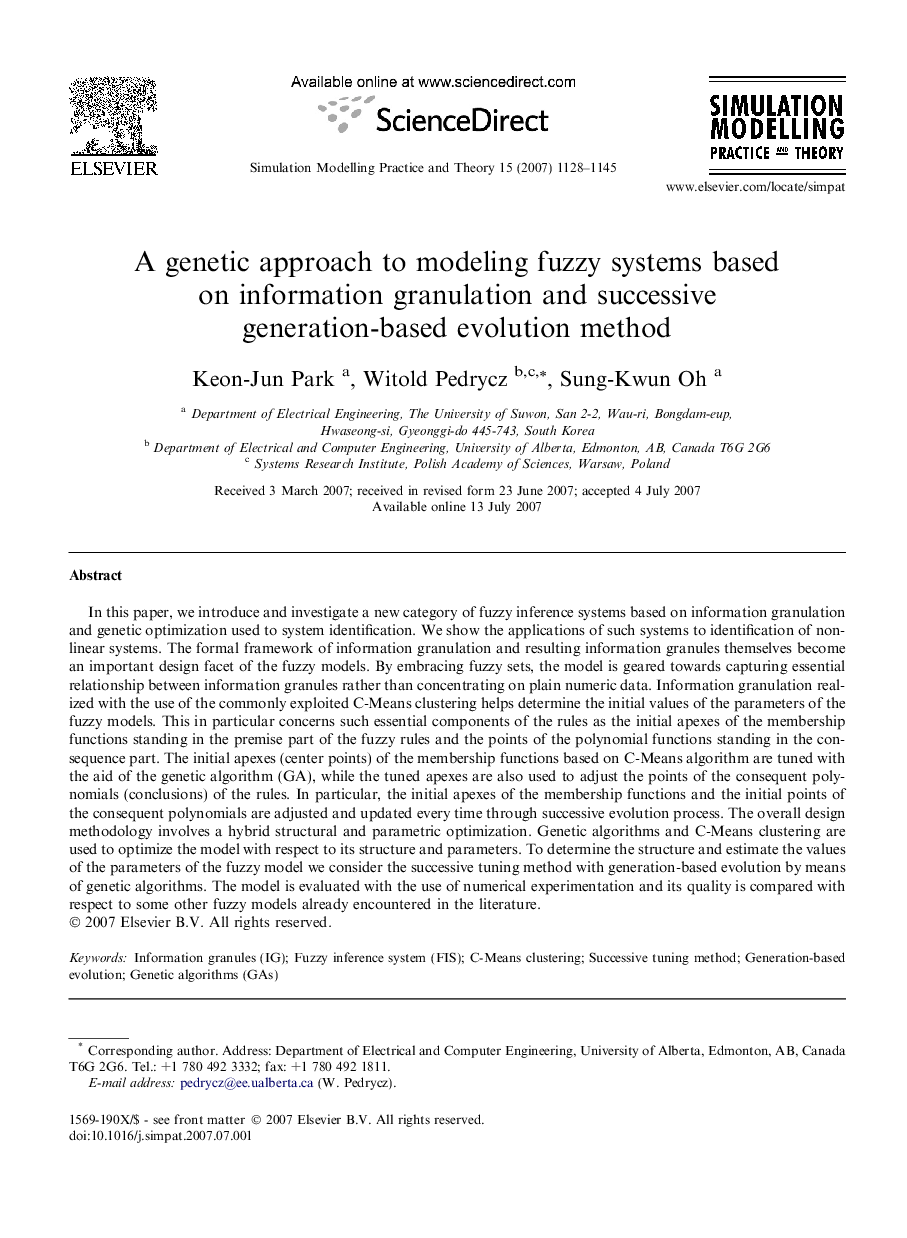| کد مقاله | کد نشریه | سال انتشار | مقاله انگلیسی | نسخه تمام متن |
|---|---|---|---|---|
| 493520 | 721900 | 2007 | 18 صفحه PDF | دانلود رایگان |

In this paper, we introduce and investigate a new category of fuzzy inference systems based on information granulation and genetic optimization used to system identification. We show the applications of such systems to identification of nonlinear systems. The formal framework of information granulation and resulting information granules themselves become an important design facet of the fuzzy models. By embracing fuzzy sets, the model is geared towards capturing essential relationship between information granules rather than concentrating on plain numeric data. Information granulation realized with the use of the commonly exploited C-Means clustering helps determine the initial values of the parameters of the fuzzy models. This in particular concerns such essential components of the rules as the initial apexes of the membership functions standing in the premise part of the fuzzy rules and the points of the polynomial functions standing in the consequence part. The initial apexes (center points) of the membership functions based on C-Means algorithm are tuned with the aid of the genetic algorithm (GA), while the tuned apexes are also used to adjust the points of the consequent polynomials (conclusions) of the rules. In particular, the initial apexes of the membership functions and the initial points of the consequent polynomials are adjusted and updated every time through successive evolution process. The overall design methodology involves a hybrid structural and parametric optimization. Genetic algorithms and C-Means clustering are used to optimize the model with respect to its structure and parameters. To determine the structure and estimate the values of the parameters of the fuzzy model we consider the successive tuning method with generation-based evolution by means of genetic algorithms. The model is evaluated with the use of numerical experimentation and its quality is compared with respect to some other fuzzy models already encountered in the literature.
Journal: Simulation Modelling Practice and Theory - Volume 15, Issue 9, October 2007, Pages 1128–1145